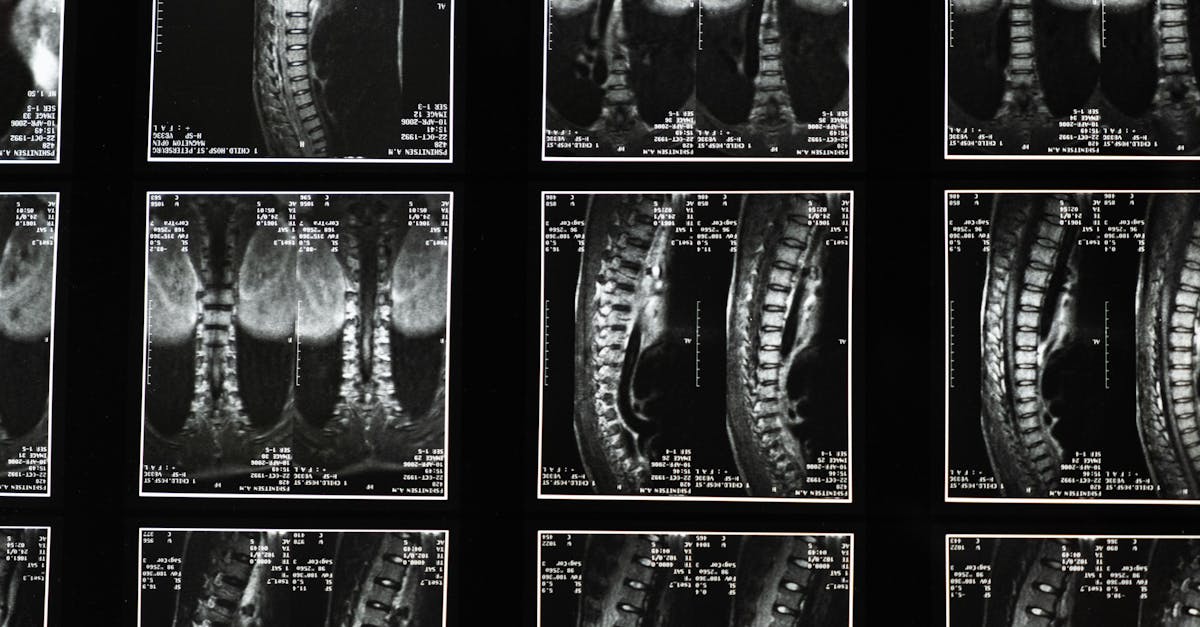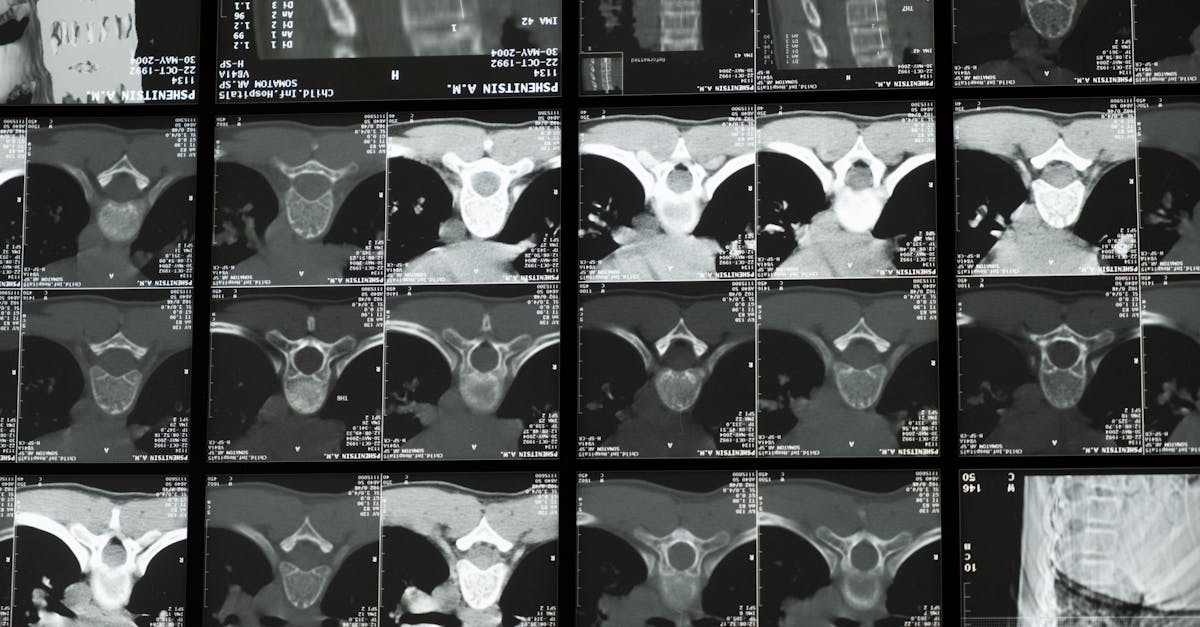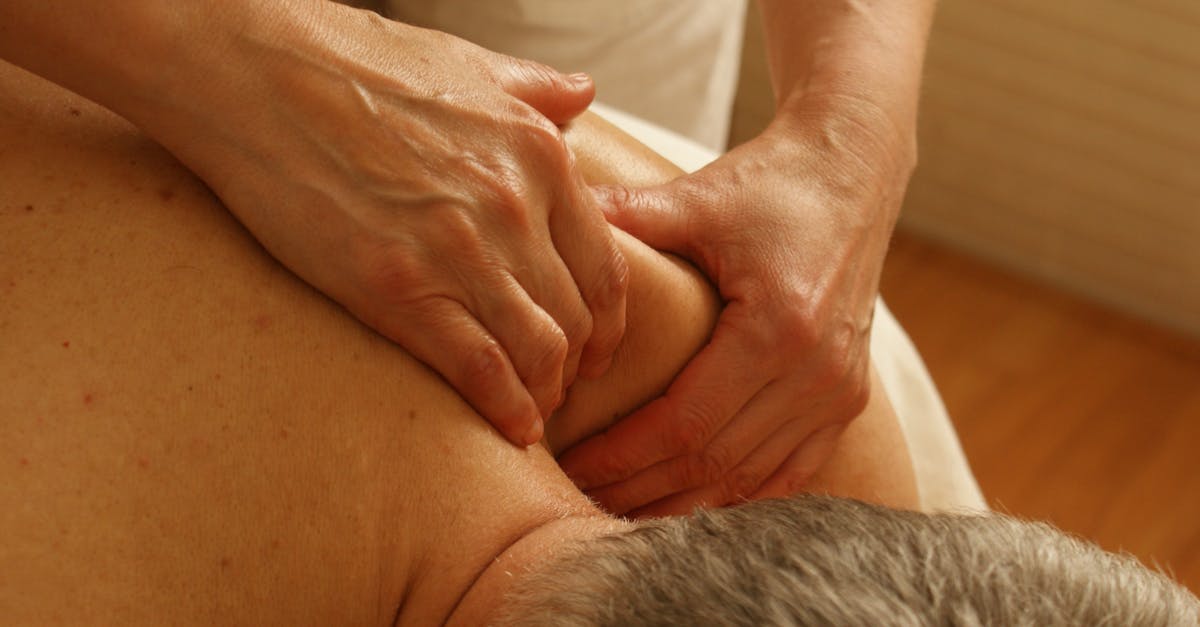Suffering from scoliosis and discomfort in your daily life? You’re not alone, and there is hope.
In Short: Navigating scoliosis can lead to challenges in maintaining a proper posture and overall comfort. This article shares expert tips on how to improve posture through targeted posture exercises, mindfulness, and core strengthening techniques. By addressing bad posture, such as rounded shoulders and forward head posture, individuals can experience significant relief and regain balance. Pulse Align emphasizes easy and effective methods to incorporate ergonomics and yoga for posture into daily routines, making it simpler to reclaim health and wellness. Ready to enhance your posture and well-being? Contact Pulse Align to learn more about our innovative approach today!
Are you struggling with lower back pain and poor posture?
Navigating scoliosis in everyday life can be challenging, but with Pulse Align’s expert tips for maintaining subtle postural harmony, you can effectively improve your posture and alleviate discomfort. Studies show that over 80% of adults experience issues related to bad posture, including lower back pain, rounded shoulders, and forward head posture. Implementing posture correction techniques such as core strengthening exercises, yoga for posture, and mindful movement can significantly reduce symptoms. By practicing proper sitting posture and utilizing ergonomics, you can experience notable improvements in your overall spinal health and well-being. Discover how Pulse Align’s unique methods enhance the results of posture exercises and create a balanced, pain-free lifestyle.

Maintaining optimal posture is essential for overall well-being, especially for those navigating the challenges of scoliosis. At Pulse Align, we understand how vital proper alignment and muscle tone are in achieving a balanced body. Our unique approach involves gentle stimulation aimed at promoting neuromuscular recalibration, helping clients improve posture naturally and rediscover functional balance.
The Pulse Align Approach to Wellness
Central to our philosophy is the understanding that minor adjustments can lead to significant improvements in posture and wellness. Our method focuses on enhancing muscle tone and symmetry through gentle stimulation, allowing the body to return to its natural balance. This technique not only supports improved posture correction but also empowers clients to embrace their wellness journey holistically.
Benefits of a Holistic Approach
Embracing a holistic viewpoint means recognizing the body’s innate healing abilities. At Pulse Align, we believe that by allowing the body to function optimally, we create an environment conducive to well-being. Our services are designed to complement any wellness routine, focusing on posture improvement, core strengthening, and mindful movement practices. Our clients have shared experiences of increased stability, reduced neck tension, and enhanced overall flexibility as a result of our techniques.
Client Experiences: A Path to Better Posture
Many who have engaged with our gentle methods express their satisfaction in seeing improvements. Clients often highlight how they have been able to improve posture naturally and reduce tension without any harsh interventions. These success stories reflect the efficacy of our approach in fostering transformation and restoring balance in everyday life.
Take the Next Step with Pulse Align
Are you ready to explore how Pulse Align can support your wellness journey? We invite you to book a consultation and discover how our unique approach can benefit you and your whole family, including children and expectant mothers. Find a Pulse Align location near you in cities like Montreal, La Prairie, Terrebonne, Chicoutimi, Charlesbourg, Saint-Jérôme, Châteauguay, Sainte-Marie, Les Escoumins, Granby, and even Panama City. Remember, our services complement your healthcare choices without replacing them, enhancing your path to well-being.
Discover more about our offerings and how we can assist in your journey by visiting us here.
Medical Disclaimer
The information and advice provided on this site do not replace the advice, diagnosis, or treatment of a healthcare professional. Always consult your healthcare team for any questions regarding your health.
- Practice Daily Alignment: Implement posture checks throughout your day.
- Strengthen Core Muscles: Engage in exercises that fortify your core stability.
- Utilize Supportive Gear: Invest in ergonomic chairs and supportive clothing.
- Focus on Proper Lifting Techniques: Bend your knees to lift instead of using your back.
- Stay Active: Incorporate low-impact activities like walking or swimming.
- Mindful Breathing: Practice breathing techniques to enhance posture awareness.
- Maintain Healthy Nutrition: Adopt a balanced diet that promotes overall well-being.
- Seek Professional Guidance: Consult with specialists to tailor effective strategies.

Scoliosis can pose challenges to one’s posture and overall well-being. By focusing on neuromuscular health, implementing posture improvement techniques, and utilizing holistic recalibration methods, individuals can effectively manage their scoliosis and enhance their quality of life. This article presents expert tips from Pulse Align designed to foster subtle postural harmony and promote everyday comfort.
Understanding Scoliosis and Its Impacts
Scoliosis, characterized by a lateral curvature of the spine, can disrupt the body’s symmetry and lead to complications such as muscle imbalances and discomfort. Those living with scoliosis often experience challenges related to bad posture, which can exacerbate tension in the back and neck. By recognizing how scoliosis affects the nervous system and posture, individuals can take proactive measures to enhance their daily experience.
Practicing Proper Sitting Posture
Maintaining a correct sitting posture is essential for individuals with scoliosis. Proper alignment minimizes strain on the spine and promotes comfort during long periods of sitting. Consider investing in ergonomic furniture, including a standing desk that encourages a more natural spinal position. Regularly check your posture by keeping your back straight, feet flat on the ground, and knees bent at a 90-degree angle.
Incorporating Core Strengthening Exercises
Incorporating core strengthening exercises can significantly improve spinal stability for those managing scoliosis. Exercises such as planks and pelvic tilts target the abdominal muscles, promoting balance and support in the torso. Integrate trunk exercises into your routine to foster a resilient core that aids in maintaining posture throughout daily activities.
Exploring Mindful Movement Techniques
Practices like yoga for posture and the Alexander Technique offer gentle approaches to enhancing body awareness and mobility. These methods focus on mindful movement, encouraging participants to connect with their bodies and make conscious adjustments in everyday life. Incorporating techniques such as the Feldenkrais Method can facilitate improved body mechanics and a deeper understanding of how to navigate daily tasks with a stable posture.
Implementing Stretching Exercises
Implementing stretching exercises can help alleviate tension and prevent discomfort associated with scoliosis. Focus on stretches that promote flexibility in the spine and hamstrings, thereby reducing strain on surrounding muscles. Consider exercises that target specific postural issues, such as forward head posture or rounded shoulders, encouraging a more open and balanced upper body.
Strengthening Through Pilates
Pilates is another excellent option for individuals seeking to improve posture and spinal health. This form of exercise emphasizes precision and control, working to strengthen the core and enhance stability. It is particularly beneficial for those with kyphosis or lordosis, as it encourages optimal alignment and functional movement.
Take Action with Pulse Align
Managing scoliosis and enhancing postural health is possible through a combination of practical strategies and expert guidance. The professionals at Pulse Align can help you develop personalized exercise plans tailored to your unique needs. Book a consultation today to explore how you can embrace the benefits of tailored strategies and regain a sense of balance in your life.
| Focus Area | Expert Tips for Wellness |
|---|---|
| Posture Awareness | Consistently monitor your posture throughout the day to ensure alignment. |
| Core Strength | Engage in exercises that strengthen your core to support your alignment. |
| Movement Practices | Incorporate gentle stretching and strengthening activities like yoga. |
| Body Mechanics | Use proper lifting techniques to minimize strain on your body. |
| Physical Activity | Maintain an active lifestyle with low-impact exercises for balance. |
| Daily Habits | Incorporate reminders to adjust your posture in routine tasks. |
| Comfortable Clothing | Choose supportive clothing that allows freedom of movement. |
| Awareness Tools | Utilize tools like posture reminders for consistent alignment checks. |
| Mindfulness | Practice mindfulness to develop awareness of body positioning. |
| Nutrition | Adopt a balanced diet to support overall wellness and health. |
Client Testimonials: Embracing Wellness Through Subtle Postural Harmony
At Pulse Align, our clients have embarked on transformative journeys, discovering how to navigate scoliosis in their everyday lives. Through our expert tips and gentle approaches, many have experienced significant improvements in their overall well-being. From La Prairie to Saint-Jérôme, the testimonials we receive reflect a renewed sense of balance and comfort in daily activities.
One client from Mont-Royal shared, “Since starting my sessions at Pulse Align, I’ve felt a deeper connection to my body. The expert guidance helped me understand scoliosis better, allowing me to make small adjustments that brought immense relief. I can now engage in activities without the discomfort I used to experience.”
In the charming city of Terrebonne, another client praised our unique approach: “The techniques I learned at Pulse Align empowered me to recalibrate my posture naturally. My physical discomfort has significantly diminished, and I feel more aligned than ever. It’s not just about pain relief; it’s about embracing a holistic recovery.”
Residents of Les Escoumins have also found great value in what we offer. A client stated, “I never thought I would find a place that understands my struggle with scoliosis. Pulse Align provided me with tools to manage my condition effectively, and the supportive environment made all the difference in my wellness journey.”
In Châteauguay, individuals seeking holistic solutions have benefited greatly: “The gentle methods promoted by Pulse Align rejuvenated my body in ways I didn’t anticipate. I appreciate how they collaborate with healthcare professionals to ensure a comprehensive approach to my health. I feel reassured knowing I’m supported on this path.”
As clients from Chicoutimi to Panama City embrace our principles, they find a community dedicated to their well-being. “What I’ve learned here goes beyond correcting posture; it’s changed the way I view my health and connection with my body,” said a satisfied client from Deux-Montagnes. “The exercises and education I received empower me to maintain my progress.”
If you’re located in areas such as Sainte-Marie or Saint-Jérôme and seeking to improve your body’s function, Pulse Align can guide you in embracing the journey to recovery. Discover the benefits of our services and see how we support clients alongside their healthcare teams as they navigate the path to wellness. For more information, visit Our Clinics to find a location near you.
Scoliosis: The Importance of Maintaining Balance and Stability
Scoliosis presents a significant challenge for maintaining balance and stability. Understanding the strategies for achieving a stable posture is crucial for individuals with this condition. Essential tactics include performing targeted exercises that emphasize spinal alignment and implementing practices that enhance core strength.
For those newly diagnosed or already navigating the complexities of scoliosis, it is imperative to understand that good posture is crucial for managing the condition. It helps minimize strain on the spine and can significantly reduce discomfort over time. Therefore, effective daily management strategies can greatly enhance one’s quality of life.
Our Mission
At Pulse Align, our mission is to deliver evidence-based, client-centered treatments that address the underlying causes of pain and dysfunction. By integrating advanced techniques and technologies, we strive to empower each person to take control of their health, ensuring a high standard of care, lasting relief, and an improved quality of life.
Every aspect of daily life, from exercise and ergonomics to supportive clothing and nutrition, should be considered in the quest for comfort. Proper body mechanics can minimize strain on the spine and contribute to a healthier lifestyle. Individuals with scoliosis have the opportunity to live a pain-free life through thoughtful management strategies and supportive approaches.
Join us on this journey to redefine alignment with care and precision. Pulse Align focuses on promoting subtle alignment for improved posture and spinal health. Embrace the gentle techniques designed to transform your approach to managing scoliosis and enhancing overall well-being.
Learn more about our approach and available services at www.pulsealign.com and find a location near you here: https://pulsealign.com/our-locations/.
Transform Your Life with TAGMED’s Advanced Spinal Decompression Therapy
TAGMED’s Spinal Decompression Therapy offers a non-surgical solution crafted specifically for individuals grappling with moderate-to-severe disc issues. This innovative treatment aims to alleviate symptoms linked to conditions such as herniated discs, bulging discs, and spinal stenosis. By gently reducing pressure on affected discs and nerves, TAGMED’s approach not only enhances mobility but also alleviates pain and supports your body’s natural healing process. If you have plateaued with other therapies, discover how this evidence-based decompression therapy can help you reclaim an active and comfortable lifestyle.
Have you tried conventional treatments and still struggle with persistent back pain due to a severe disc condition?
Mechanism of Action
TAGMED’s neurovertebral decompression employs a controlled, progressive traction force applied to the spine. This method effectively increases the space between vertebrae, reducing pressure on intervertebral discs and nerve roots, while promoting optimal fluid circulation in the targeted area. As the pressure diminishes, inflammation decreases, leading to significant pain relief, making it a reliable, non-invasive solution for individuals suffering from chronic back pain or sciatica.
Specific Benefits
This non-invasive technique is particularly effective at alleviating chronic pain and symptoms associated with conditions like herniated discs or spinal stenosis. Through the reduction of pressure on critical nerve structures and the optimization of fluid circulation around the discs, TAGMED’s therapy expedites recovery and improves the quality of life for numerous patients seeking relief from persistent discomfort. Patients often report a noticeable decline in symptoms, enabling them to engage more fully in daily activities.
Comparison with Other Treatments
When evaluating the effectiveness of TAGMED’s neurovertebral decompression, it becomes clear that it offers distinct advantages over traditional treatments, such as pain medications, corticosteroid injections, and surgery. Unlike invasive interventions, TAGMED’s method minimizes medication-related risks while promoting a potentially quicker recovery time. These attributes make it a compelling choice for those searching for safer, evidence-based alternatives to manage chronic spinal issues.
Case Studies or Testimonials
Several patients have experienced transformative results from TAGMED’s neurovertebral decompression therapy. For instance, individuals suffering from debilitating disc pinch mechanisms have reported lasting pain relief, quicker resumption of daily activities, and a marked decrease in reliance on pharmaceuticals. These testimonials illustrate the practical advantages and tangible results of this therapeutic approach, reinforcing the value of neurovertebral decompression in managing chronic pain.
Living with scoliosis presents unique challenges, yet with the right approach, individuals can achieve significant improvements in their everyday lives. Pulse Align emphasizes the importance of posture correction through gentle, non-invasive methods that focus on the body’s ability to restore balance and harmony.
Clients who engage with Pulse Align routinely experience enhanced mobility, reduced discomfort, and an overall uplift in their sense of well-being. By embracing the principles of holistic health, many have found empowerment through the process of neuromuscular recalibration, leading them to feel more aligned both physically and mentally.
To those navigating their journey with scoliosis, we encourage you to explore how Pulse Align can support your path to wellness. Discover the benefits of improved posture and natural pain relief through our empathetic approach that prioritizes your comfort and success.
Are you ready to take the next step towards a healthier, more balanced you? Schedule your consultation now and see how Pulse Align can make a difference in your life. Your journey to enhanced well-being starts here.
Do you suffer from a chronic condition that responds little or not at all to conservative treatments?
In the quest for balance and well-being, many individuals seek solutions that embrace a holistic approach. Naturally, one innovative method that has gained recognition is Pulse Align, a non-invasive technique designed to assist the body in restoring its inherent balance and posture. Through gentle, imperceptible pulses, this method aims to promote harmony in muscle tone, which may effectively reduce tension and encourage overall comfort, allowing clients to navigate life with greater ease.
Rather than focusing on specific discomfort or conditions, Pulse Align emphasizes the body’s remarkable ability to recalibrate itself naturally. Clients often find that by fostering this internal balance, they experience wonderful improvements in overall disposition and posture. The subtle enhancement of muscle tone symmetry through our techniques may lead to an uplifting sense of well-being, contributing to a more relaxed and centered lifestyle.
Central to the Pulse Align philosophy is a commitment to personalization. Our approach considers the distinct needs of each client, ensuring that the experience is tailored to individual circumstances. Many testimonials highlight how clients have noticed significant enhancements in their overall wellness, with reports of increased comfort in daily activities and improved postural alignment. These positive experiences reflect the powerful potential that comes from allowing the body to reconnect with its natural rhythms.
We invite you to explore the Pulse Align website to learn more about our services and find a nearby location, in cities such as La Prairie, Mont-Royal, Terrebonne, and many others. Booking a consultation is simple, and we encourage you to consider this opportunity for yourself and your family. It’s important to remember that Pulse Align complements, rather than replaces, the recommendations of your healthcare team, supporting you on your wellness journey with a safe and gentle approach. For those curious about enhancing their overall symmetry and balance, our services provide a family-friendly pathway to promoting neuromuscular health. Discover more about our locations and book an appointment online today at Pulse Align.
Frequently Asked Questions
Posture Imbalance, body misalignment
Does footwear choice affect posture?
Absolutely, inappropriate shoes can alter foot biomechanics, affecting overall posture and body alignment.
Does office work contribute to misalignment?
Often, yes. Sitting for long hours in front of a screen can lead to a forward head position, rounded shoulders, and other postural issues.
How do I know if I have a postural imbalance?
Recurring pain, feelings of tightness, difficulty maintaining an upright posture, and visual observation can indicate imbalance.
Can postural imbalance cause digestive issues?
In some cases, poor posture can compress internal organs and influence digestion, causing discomfort and bloating.
Do sit-stand desks help reduce imbalance?
Yes, alternating between sitting and standing reduces static tension and supports better overall alignment.
Are regular breaks at work useful?
Absolutely, taking breaks to stand, stretch, and move helps reduce tension and improve long-term posture.
Can children suffer from postural imbalance?
Yes, heavy backpacks, poor posture habits, and rapid growth can lead to imbalance in children.
How long does it take to improve misalignment?
The timeframe varies depending on severity. With consistent effort, it may take a few weeks to a few months to see significant improvements.
Does being overweight affect posture?
Yes, excess weight, especially around the abdomen, can shift the body’s center of gravity and increase joint strain.
How do I maintain achieved progress?
Continue exercising, stay attentive to daily posture, and have regular check-ups with a professional.
Gabriel Dupuis knows that life’s pains can often be traced back to the way we sit, stand, and move. As a Posture Awareness Advocate at Pulse Align, he’s committed to showing readers how small adjustments in alignment can bring big relief. With a blend of empathy and evidence-based research, Gabriel translates the science of posture into practical steps that help ease discomfort, protect against injury, and restore natural balance. He believes that everyone deserves to feel strong, stable, and pain-free—and through his writing, he offers the guidance and encouragement to help readers reach that goal.
Medical Disclaimer
The information and advice provided on this site do not replace the advice, diagnosis, or treatment of a healthcare professional. Please note that the author of this article is neither a doctor nor a specialist in a medical specialty as defined by the Collège des médecins du Québec. Manual medicine, functional medicine, and sports medicine as described on this site exclude any medical treatment or diagnosis made by a doctor or medical specialist. Always consult your doctor for any medical questions. For more details, please read our complete Legal Notice.



